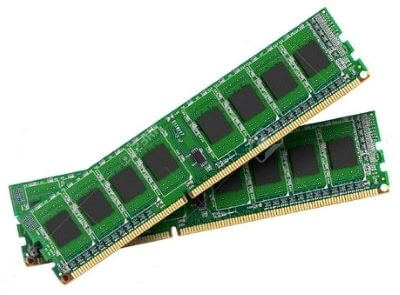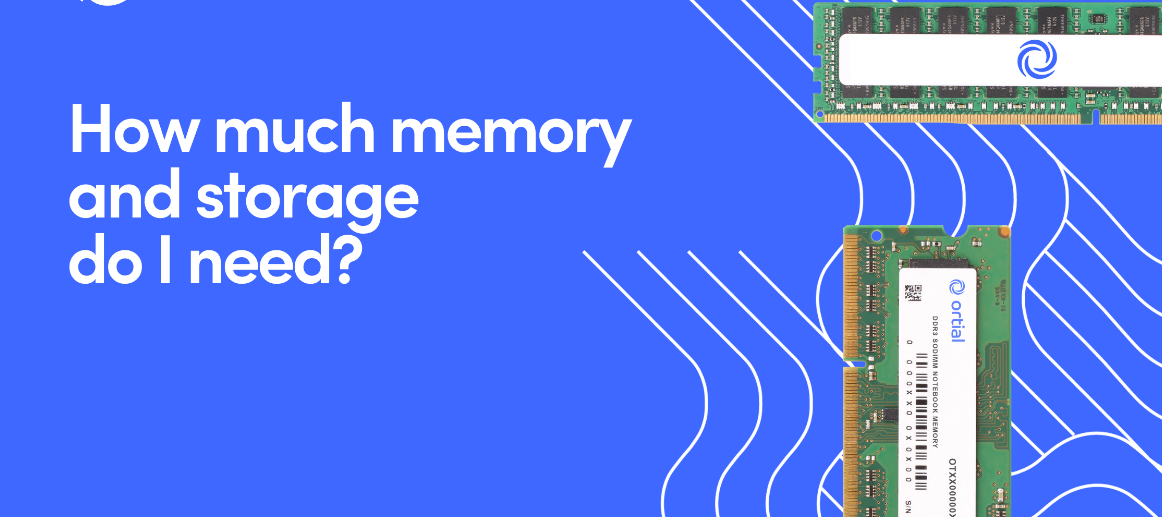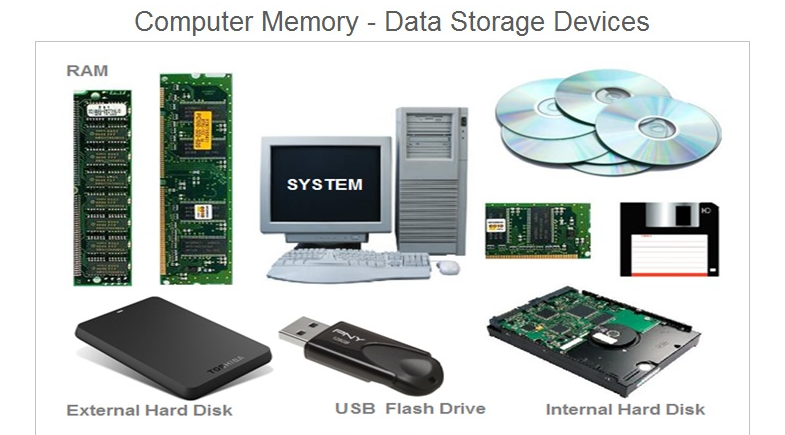A computer operates in a unexpected way as usual. It needs a combination of hardware and software systems to process the given information and provide a given output. All of the hardware components become interconnected to each other in a virtual order as soon the power is ON. As a result, the BIOS searches and loads the operating system and other applications (the software) from Read Only Memory (ROM) to Random Access Memory (RAM) that makes the computer ready to use.
What is Random Access Memory of your System ?

Random Access Memory or RAM is a temporary memory that saccesses data in a random order. These devices are used as the main memory in computer systems. RAM’s are the expensive form of data storage devices but their faster access to data outweighs the cost. A key function of this dynamic memory is to read and write data as long the power is connected. It stores the input data (input as a result of running a particular program) in a temporary manner. The processor then accesses the data from RAM for further processing.
RAM is both used for storing the information temporarily and other massive amounts of non-random data (permanent mass storage) such as the Hard Disk Drive (HDD). Depending on the usage requirements, every type of personal computer uses a certain amount of Random Access Memory for faster access to data. The storage capacity of RAM is directly proportional to CPU performance. Higher memories improve efficiency of computers and enhance system capabilities during routine processing of information.
Memory and Storage Requirements for a Computer
In a typical computer system, the maximum amount of RAM might be 8GB or more which is minimal as compared to the amount of HDD capacity it may have. This difference in the memory size reflects the efficiency and performance of RAM which makes them relatively expensive as compared to other storage devices. Depending on the usage necessities, memory and storage requirements for a normal computer can vary from user to user. Here is a brief explanation of the case with memory size recommendations from experts for better performance and enhanced CPU capabilities.
- Casual Usage :
Computers which are used on a casual basis do not need a higher memory size. They are mostly used on an occasional basis for a few tasks. Some of the common tasks that are infrequently performed include internet browsing, emailing and listening to music. The recommended memory size for similar computers is 1 GB-2 GB; however, one may further improve it for better performance.
- Frequent Usage :
Some users use their computers more frequently for a range of processes. They often need more operations on a daily basis. Together with browsing the internet and sending emails to friends, they may also use word processing applications and other graphics programs. To allow a multitasking capability, experts recommend a 2 GB-4 GB memory size for computers which are frequently used.
- Power Usage :
Computers are more frequently used in the education fields as compared to others. Unlike frequent or casual use machines, these computers are used for intensive multitasking that needs quite a noticeable memory size. Students mostly use them for photo and video editing, gaming, and graphical programs. Experts recommend a minimal of 4 GB-8 GB memory size for similar computers.
- Professional Usage :
A computer that is used for professional purpose needs more memory as compared to others. These computers are mostly used for multimedia editing, high-performance gaming, 3D modeling, and graphics designing. Both performance and improved efficiency are the key objectives in a professional environment and this is why an 8 GB-16 GB memory size is recommended for similar computers.
When you should Upgrade Your RAM ?
Users with 2GB or less memory size can benefit from a RAM upgrade to enhance system capabilities unless they hardly use their computers just for a single application at one time. Depending on your system usage, you may observe Task Manager to check if the memory usage is crossing the limit. If the memory is reaching its limit, it’s better to go for an upgrade so that the system performance is improved.
Users must also analyse the proper utilising of memory before deciding to upgrade. The best tool to analyse it is the Resource Monitor which is included both in older and latest versions of the leading operating systems. Resource Monitor gives a quick view of resources that are being used. This also provides a detailed analytics on why resources were being used and how often the operating system was forced to push into Page-File due to lack of RAM.
- Benefits Of Upgrading Your RAM :
When computer problems come up on a regular basis that affects its functionality and performance, a memory upgrade is the most cost effective and efficient solution. This involves adding more RAM chips into the computer. There are different reasons that cause computer problems and this is why a memory upgrade is considered. Users can get the following benefits from upgrading to a higher memory size.
- Avoid Computer Slowdowns :
More memory means more operations can run at one. Upgrading memory highly beneficiate those who process multitasks at once. Computers with small memory size may experience a major slowdown when working on multiple programs at a time. This problem is eliminated with RAM upgrade and extra memory is allocated for future use which avoids the option for using HDD as a virtual memory.
- Extra Programs Availability :
Every single program needs a specified amount of memory. If the memory usage reaches its limit, not even a single program will run properly. Upon upgrading the RAM, users can easily enhance their PC’s overall capabilities and performance. A memory upgrade can make a computer clever enough to run programs that it may have been unqualified to run before.
- Faster Browsing :
Faster browsing is a major problem for internet surfers with limited memory size. This experience tends to be noticeably faster after a memory upgrade. Computers with higher RAM’s can load web pages faster irrespective to the speed of internet connection. Upgrading memory to a higher size reduce the chances for a computer to use HDD memory which slow down the overall performance.
- Enhanced Network :
Computer systems which are operating in an enterprise environment are connected to a network for using shared resources such as a printer. These computers can experience a massive boost in the network capabilities once the RAM is upgraded.

